Global high-mix volume high-speed Shenzhen PCBA manufacturer

Ru
9:00 -18:00, Mon. - Fri. (GMT+8)
9:00 -12:00, Sat. (GMT+8)
(Except Chinese public holidays)





Global high-mix volume high-speed Shenzhen PCBA manufacturer

Ru
9:00 -18:00, Mon. - Fri. (GMT+8)
9:00 -12:00, Sat. (GMT+8)
(Except Chinese public holidays)





HomePage > Blog > Knowledge Base > Overview of a Microcontroller Board
A microcontroller, also known as a computer-on-chip, is an electronic device that belongs to the microcomputer family. Microcontrollers are considered the brains of many electronic products, and it is due to microcontroller boards that the development of embedded systems has been simplified.
If you are an electrical enthusiast, DIY hobbyist, or a professional, you have come across a microcontroller board. These microcontroller boards are extensively used in electronic devices such as robotics, home automation, industrial facilities, digital systems, healthcare devices, smart agriculture devices, and the list goes on. In this article, we will explore what a microcontroller board is, its key components, and some popular microcontroller boards.
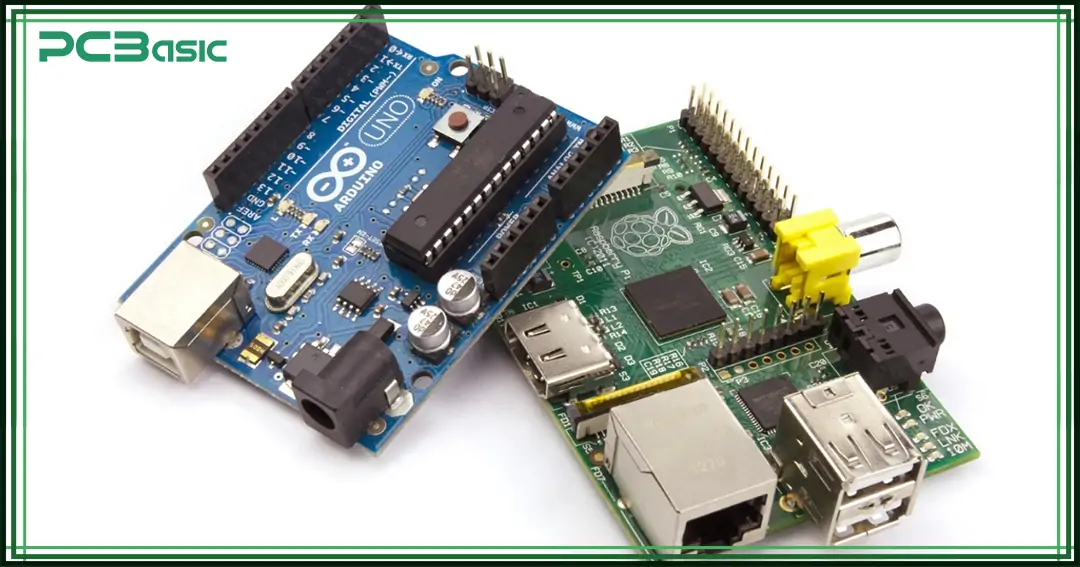
A microcontroller is a microcomputer that is designed to perform specific tasks within an embedded system. A microcontroller is a single-package device, meaning it consists of a Central Processing Unit (CPU), Random Access Memory (RAM), Read Only Memory (ROM), I/O Ports, special function registers, Timers, Crystal Oscillator, Digital to Analog Converter (DAC), and Analog to Digital Converter (ADC) all in one single chip.
A microcontroller board, on the other hand, is a circuit board that makes the development of an embedded system convenient. It consists of a microcontroller, I/O pins, a power supply, and communication interfaces. A Microcontroller board provides design engineers a platform to write and test code, enabling them to verify their electronic projects before going to the product design phase. The microcontroller board also provides a platform for users to control their electronic devices in real-time, such as sensors, motors, lights, robots, etc. There are many microcontroller boards available depending on the requirements of the user, such as Arduino UNO, ESP32, STM32 Nucleo, and Raspberry Pi board. A typical block diagram of a microcontroller is shown below.
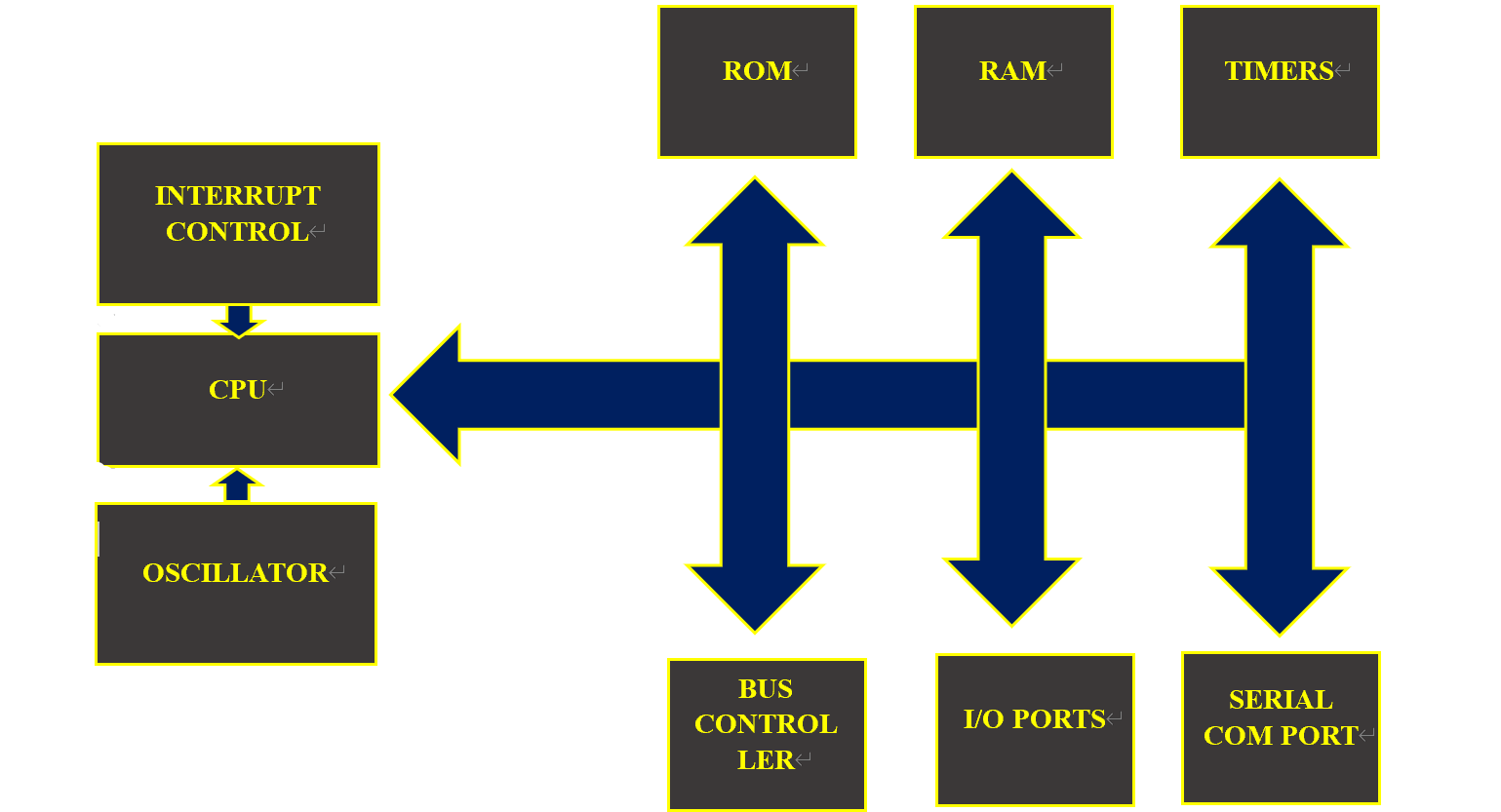
A microcontroller board is a complete package that provides an easy and convenient solution to design electronic projects. A microcontroller board is a complete ecosystem that allows designers to design, test, and validate their electronic projects. A typical microcontroller board consists of the following key components.
A microcontroller chip serves as the brain of the microcontroller board. The microcontroller consists of a CPU, flash memory, EEPROM, timers, DACs, and ADCs. It is responsible for communication between the microcontroller board and the physical world, like sensors, motors, and LEDs, etc. When you run or test code, it is stored in the flash memory. There are a lot of microcontroller chips available on the market, such as the 8051 microcontroller, PIC microcontroller, and STM32 microcontroller.
A microcontroller operates on a 3.3V supply. A microcontroller board has a voltage regulator that takes the input from the external world and converts it into a stable 3.3V for the microcontroller chip. The Arduino UNO board accepts 7V-12V input and converts it to 5V (for most operations) and 3.3V (for some peripherals).
A microcontroller board consists of various input/output pins, known as I/O pins, that connect it with external devices such as sensors, motors, LEDs, transistors, etc. These I/O pins are categorized as digital I/O pins, Analog I/O pins, and Pulse Width Modulation (PWM) Pins. Each category of pins is used for unique purposes; like digital I/O pins are used to read binary signals (High=3.3V, Low=0V), and analog I/O pins are used to read analog values in the form of voltage levels, such as temperature and humidity sensor values.
These analog values are then converted to digital using an ADC so that the microcontroller can read them. Similarly, PWM pins are commonly used to control the speed of the motor or the brightness of the bulb. The Arduino UNO development board consists of 14 digital I/O and 6 analog I/O pins.
A microcontroller board is one of its primary tasks to communicate with external devices such as sensors and motors. A microcontroller communicates with the other devices using the serial communication protocols. These protocols are UART (Universal Asynchronous Receiver/Transmitter), SPI (Serial Peripheral Interface), and I2C (Inter-Integrated Circuit).
Most modern microcontrollers come with all three communication protocols. It is the designer’s choice as to which specific communication protocol to use for an electronic project. Each communication protocol has unique features, such as UART being used for point-to-point communication and SPI being used for high-speed communication. The Arduino UNO development board has one UART, one I2C, and one SPI interface.
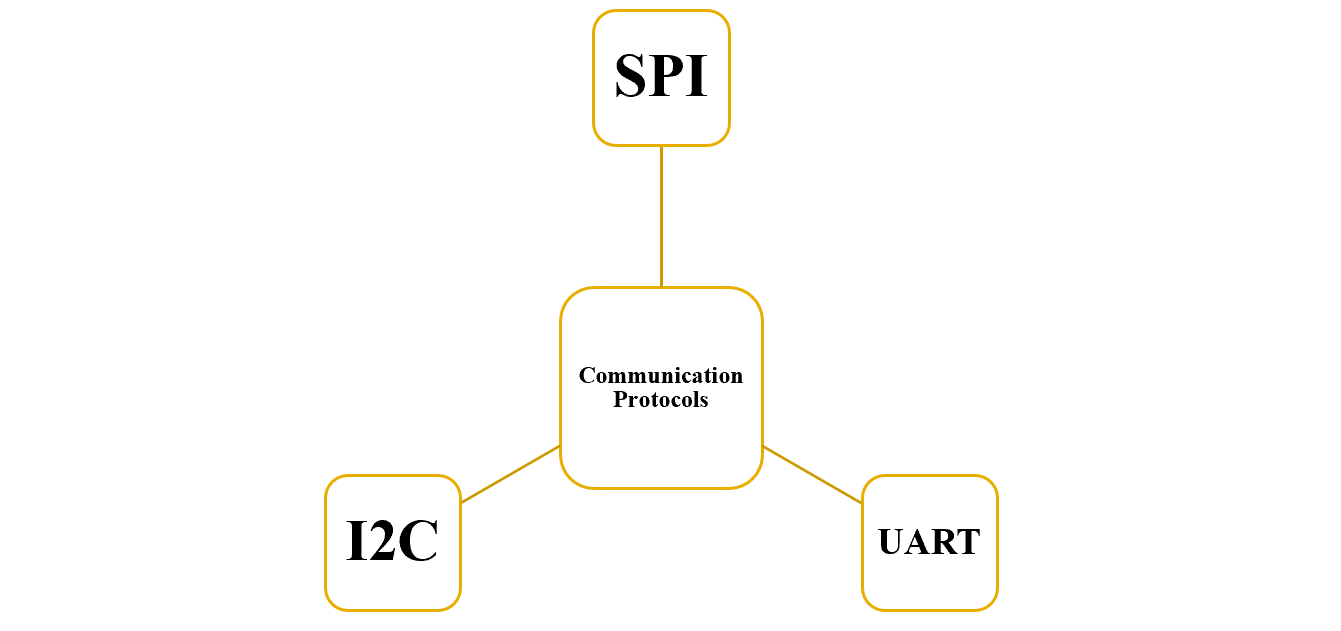
A microcontroller board also has a USB port that allows the user to upload the program onto the microcontroller or to use it as a debugging terminal. This is done using the CH340 IC (USB-Serial converter) that is included on the development board.
Sometimes, when the microcontroller board is stuck and does not respond, the reset button is used to restart the microcontroller. This is similar to rebooting your computer.
In a microcontroller board, different male/female headers and connectors are included, facilitating the designer to plug the board into a breadboard.
Most microcontroller development boards include LEDs and user buttons for quick testing and troubleshooting. LEDs are mostly used for programming purposes, such as toggling, etc.
Microcontroller boards come with a crystal oscillator that provides the system clock.
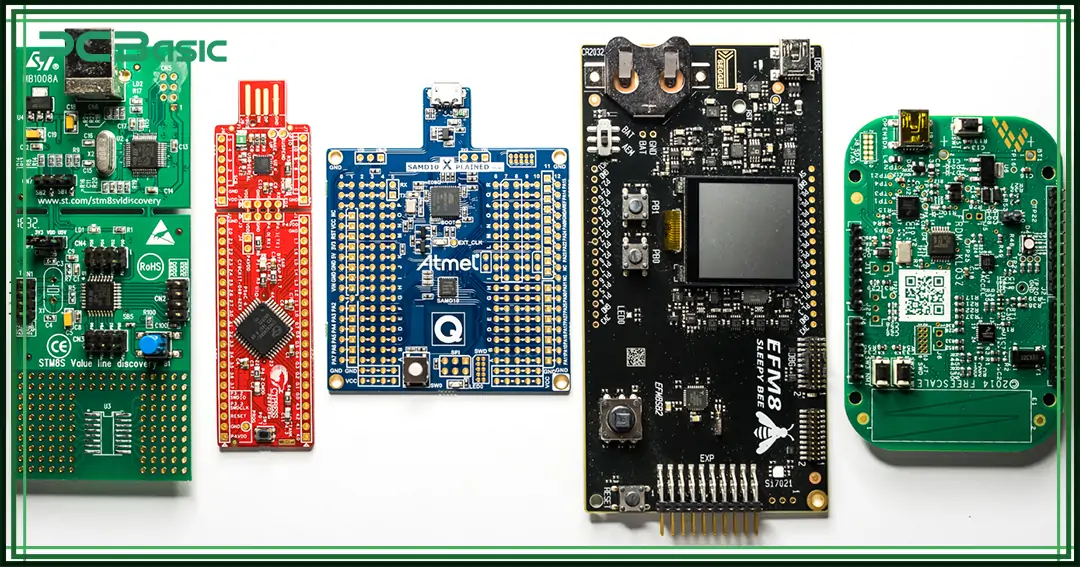
Microcontroller boards provide a convenient platform for designers to test and validate their designs. Due to their ease of use, microcontroller boards are extensively used for academic and prototyping purposes. It is the best tool for students to learn embedded systems and for professionals to validate their prototype designs. Simply speaking! Microcontroller boards are widely used because they are:
1. Easy to use:
The external circuit is already included on the development board, which makes it easy to use. One can start building right away.
2. Excellent for Prototyping:
It is a popular choice for those who want to validate their design without manufacturing a custom PCB. It also reduces the development cost of the prototype.
3. Easy to program:
Microcontroller boards, including Arduino UNO, support high-level programming such as C and C++, making them a popular choice among embedded software and hardware developers.
4. GPIO Access:
Microcontroller boards provide easy access to the General-Purpose Input Output (GPIO) of the microcontroller chip. These pins can be configured as digital I/O, analog I/O, and for PWM purposes as well.
5. All in one package:
The most amazing thing about microcontroller boards is that they offer a complete package, offering everything like CPU, microcontroller, IO Pins, EEPROM, USB, etc., all in one single unit.

Various microcontroller boards are famous due to their unique features. Among all, the most popular microcontroller boards are:
The Arduino Uno is one of the most widely used and popular development boards worldwide. Arduino UNO is suited for small, simple, and DIY projects. These development boards are used mainly by beginners, students, and for prototyping purposes. It consists of an Atmega 328 microcontroller chip, a 16MHz crystal, one USB interface, 16 digital I/O pins, and 6 analog I/O pins.
Raspberry Pi Pico is an advanced development board that consists of RP2040 microcontroller, 26 GPIO Pins, and 2 communication channels for each UART, I2C, and SPI protocol. It also consists of a crystal oscillator of 133MHz. This development board supports the C/C++ programming language.
ESP32 is an advanced microcontroller development board that has a built-in WiFi module. This board consists of an Xtensa microcontroller that supports a 240MHz clock speed. It also has a built-in Bluetooth module and 34 GPIO pins available for the user.
STM32 development boards are used for high-end electronic project developments such as industrial automation and complex embedded systems. This development board not only has 2MB of flash memory, but it also supports the CAN communication protocol.
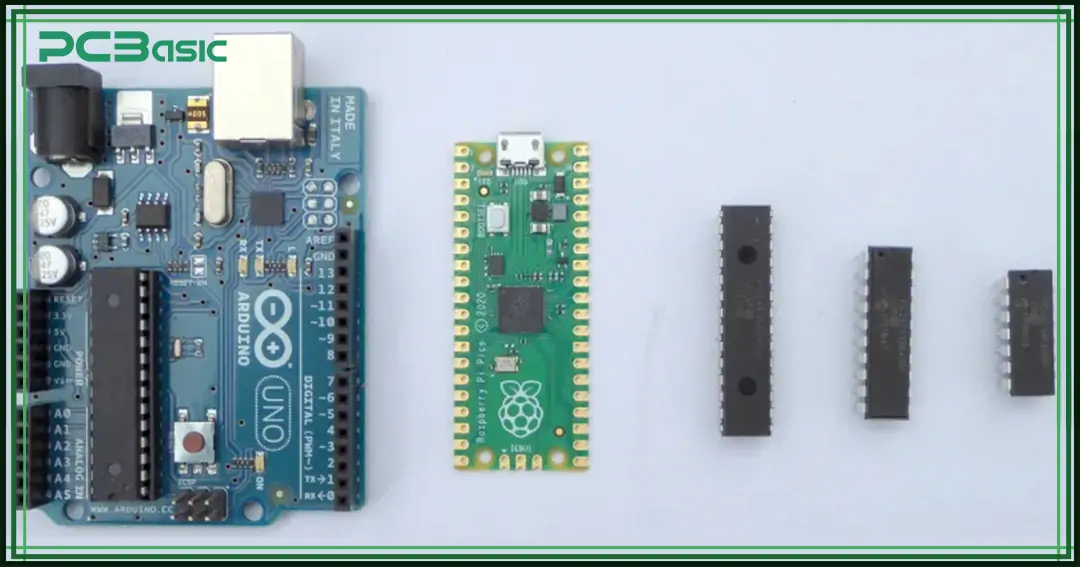
Microcontroller boards are used in almost every field of electronics. The following are the major application areas where microcontroller boards are used:
In almost all consumer electronic devices, including microwave ovens, smart TVs, gadgets, and remote controls, microcontroller boards are used.
Various healthcare equipment, such as blood pressure monitoring devices, ECG measuring devices, and other diagnostic equipment, utilize the microcontroller boards.
In every smart agriculture, electronic devices such as soil monitoring, etc, utilize microcontroller boards.
In industry, microcontrollers are widely used to control the sensors, motors, and actuators.
In the automotive industry, microcontrollers are used for various purposes, including lighting systems.
In conclusion, microcontroller boards play a pivotal role in the design and development of electronic products by providing an all-in-one platform to designers. Various microcontroller development boards such as Arduino UNO, STM32, etc. provide a user-friendly, cost-effective, and powerful tool for designers to build and validate their prototypes.

Assembly Enquiry
Instant Quote